REVIEWS OF:
- Danilo Pérez / John Patitucci / Adam Cruz Trio
- Fabrizio Bosso Quartet
- John Scofield w/ Jon Cowherd, Vicente Archer, Josh Dion
- Miguel Zenón Quartet
- Naïssam Jalal / Claude Tchamitchian
- Bobby Watson Quintet
- ‘Famoudou Don Moye Plays Art Ensemble of Chicago’
- Emanuele Cisi / Salvatore Bonafede
- Federica Michisanti French Quartet, featuring Louis Sclavis
- Ana Carla Maza
- Abdullah Ibrahim
- Modern Standards Supergroup
Bergamo, located some 40 km (25 mi) northeast of Milan, is a beautiful city for a jazz festival. Or rather cities plural, as the medieval and fortified Città Alta (‘upper city’) located on a hill is very different from the solidly modern Città Bassa (‘lower city’).
To take the nineteenth-century funicular (€1.70) is not only to climb through space but also to regress centuries in time, to leave far behind the stately avenues of the Città Bassa, tunnel through the ancient Venetian walls (which are a UNESCO World Heritage Site), and emerge into a medieval and Renaissance labyrinth of squares and narrow streets cobbled with a distinctive herringbone pattern: a world of towers and arches, fountains and statues, and churches with ornate facades. Those who prefer to walk can take the cobbled streets that wrap around the hill, or a more direct stone staircase. All pedestrian options create a satisfying climb, stunning views, and the feeling of a pilgrimage.
In the Città Alta even the soundscape seems to regress in time, often muted to the animated chatter of people crowding the streets and restaurants (mercifully free from thumping music), the clang of church bells, or the soft pft-pft-pft from the fluttering wings of a startled pigeon. In the quieter nooks and corners, the only sounds of modernity might be the soft rumble of car tyres on cobbles or the muted snarl of a Vespa scooter.
Attending the Bergamo Jazz Festival offers ample opportunities to explore both the Città Alta and the Città Bassa, the main venues being the Teatro Sociale (opened in 1809) in the upper town and the Teatro Donizetti (opened in 1800) in the lower town. Both are opulent opera houses, both recently renovated. Smaller venues this year ranged from a restaurant to the Chiostro del Carmine (a monastery converted into an arts space), and Accademia Carrara (art museum). And with up to five concerts a day to choose from, any visitor was spoilt for choice.
Thursday 21 March
The first evening event was a double bill in the Teatro Sociale. The sense of drama started with leaving the narrow streets of the Città Alta for the plush cosiness of a theatre with soaring rows of boxes arranged in a tight horseshoe, and an exposed ceiling of wooden rafters that looks like the inverted hull of an ancient ship.
The first act was a trio comprising the Panamanian pianist Danilo Pérez (piano and keyboards) with John Patitucci (double and electric bass) and Adam Cruz (drums). Pérez and Patitucci previously played together in the Wayne Shorter Quartet, and Cruz was a member of the Pérez trio before Patitucci joined. The set began with a jaunty tune called ‘Whistle Through Adversity’, and other tunes included ‘Alternative Realities’ (dedicated to the activist Angela Davis) and ‘Beloved’ (dedicated to Toni Morrison). I was expecting a straight-ahead jazz set and we certainly got some of that, but the performance often strayed into fusion and rock territory: synth/organ textures, electric bass and driving drums on more energetic numbers; but electric bass carrying the melody underpinned by synth washes and subdued drums for a Wayne Shorter dedication called simply ‘Wayne’. Top-level musicianship all round – but for me the highlight was the encore, an expansive all-acoustic ‘Round Midnight’ of delicate piano, lovely bass solo and subtle brushwork.
The second act was a revelation, the quartet of an Italian trumpeter called Fabrizio Bosso I hadn’t heard of before, accompanied by Julian Oliver Mazzariello (piano), Jacopo Ferrazza (double bass) and Nicola Angelucci (drums). The set opened with a clarion-bright take on ‘Felicidade’ and ranged from agile neo-bop so energetic I could see the veins on Bosso’s neck standing out, to moments of Chet Baker like softness, to enhanced techniques such as Mazzariello plucking the strings inside the piano, Angelucci abandoning his sticks to drum with his hands, and Bosso using pedals to apply wah-wah effects and delay. For the encore, Bosso left the stage for the back of the theatre, playing as he strolled through the audience back onto the stage. It was an exhilarating set of showmanship combined with first-rate musicianship.
Friday 22 March
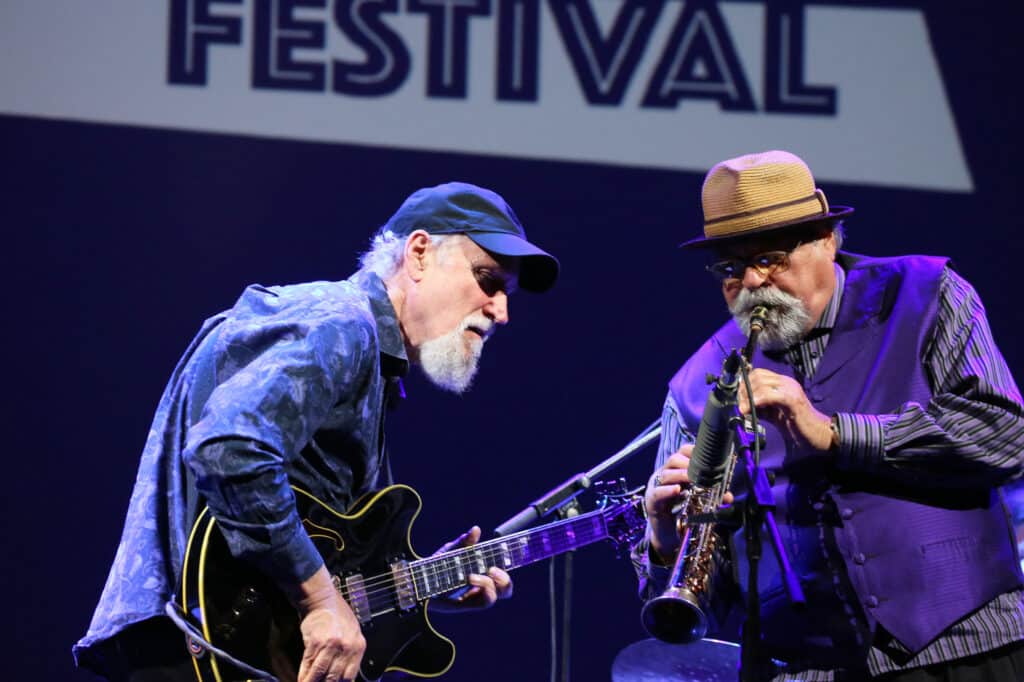
Photo by Luciano Rossetti / Fondazione Teatro Donizzetti
Friday’s evening concert was another double bill, this time in the Teatro Donizetti in the lower town. Like the Teatro Sociale, it’s a splendid setting for a concert. One of its highlights is the trompe l’oeil ceiling fresco that had me craning my neck upwards before the lights were dimmed.
First up was US guitar legend John Scofield, with Jon Cowherd (piano and keyboards), Vicente Archer (double bass) and Josh Dion (drums) for a project billed ‘Yankee Go Home’ that Scofield has explained as follows: ‘The concept is to cover Americana, rock hits and jazzed-out folk songs plus some of my originals written in that vein.’ The band certainly achieved that, coming straight out of the gate with the kind of extended wig-out (with a bluesy, country vibe) that many others would leave until the end of a concert. Scofield even looked the part, grizzly with a long white beard and baseball cap.
It wasn’t all full on, at one moment dropping down to solo guitar, but the lasting impression is of a concert of great intensity. Highlights included a lengthy workout on ‘Wichita Lineman’ leading to the Pharaoh Sanders tune ‘The Creator has a Master Plan’ with a surprise appearance from Joe Lovano on soprano saxophone, played with such scorching intensity it was almost a fire hazard; and the encore, Bob Dylan’s ‘Mr Tambourine Man’, an earworm that had me humming the tune long after the lights came up.
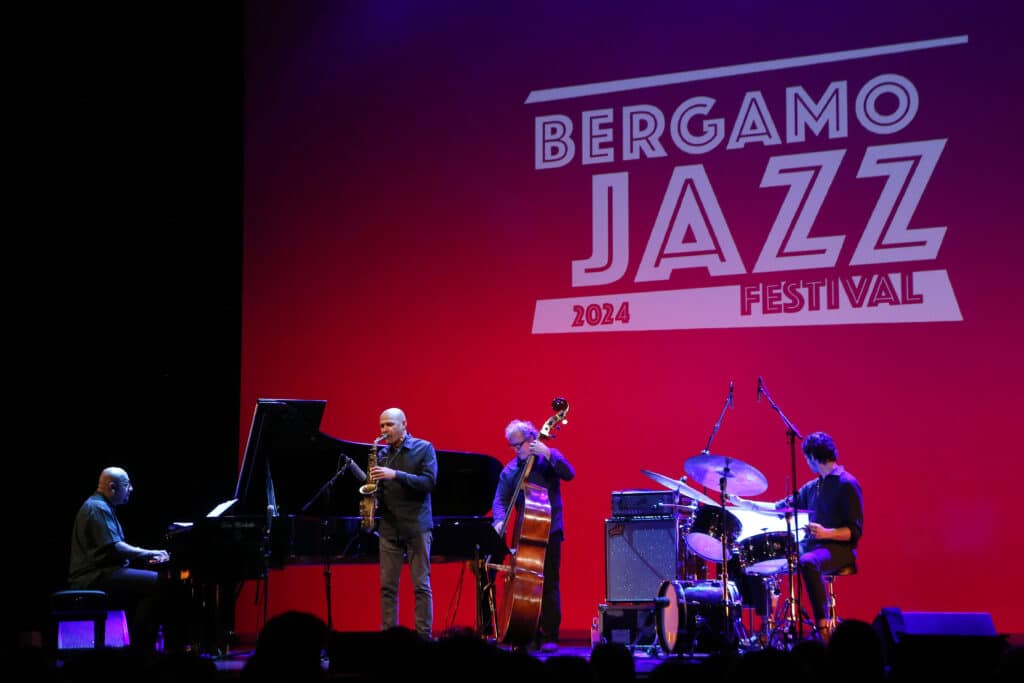
Photo by Luciano Rossetti / Fondazione Teatro Donizzetti
The second set was another quartet, this time led by Puerto Rican alto saxophonist Miguel Zenón, with Luis Perdomo (piano), Hans Glawischnig (double bass) and Dan Weiss (drums). Any quartet following ‘Yankee Go Home’ needed plenty of fire, which this quartet certainly had. Zenón opened with a breakneck cadenza of Latin-tinged bebop, joined later by riffy piano and arco bass. Zenón proved a generous leader, giving his band plenty of opportunities for solos. For example, the second number started as solo piano, joined by bass and drums for a trio performance only occasionally interspersed with melodic fragments from the saxophone. As with ‘Yankee Go Home’ there were moments of quietude but overall the energy level was high, Zenón often swaying and bouncing on the spot as if his legs were springs, as if he were so coiled with energy that even playing breakneck bop couldn’t disperse it. But then for the encore he delivered a cadenza of liquid gold, of almost Johnny Hodges sweetness, the rhythm section matching the mood for a gentle ending.
Saturday 23 March
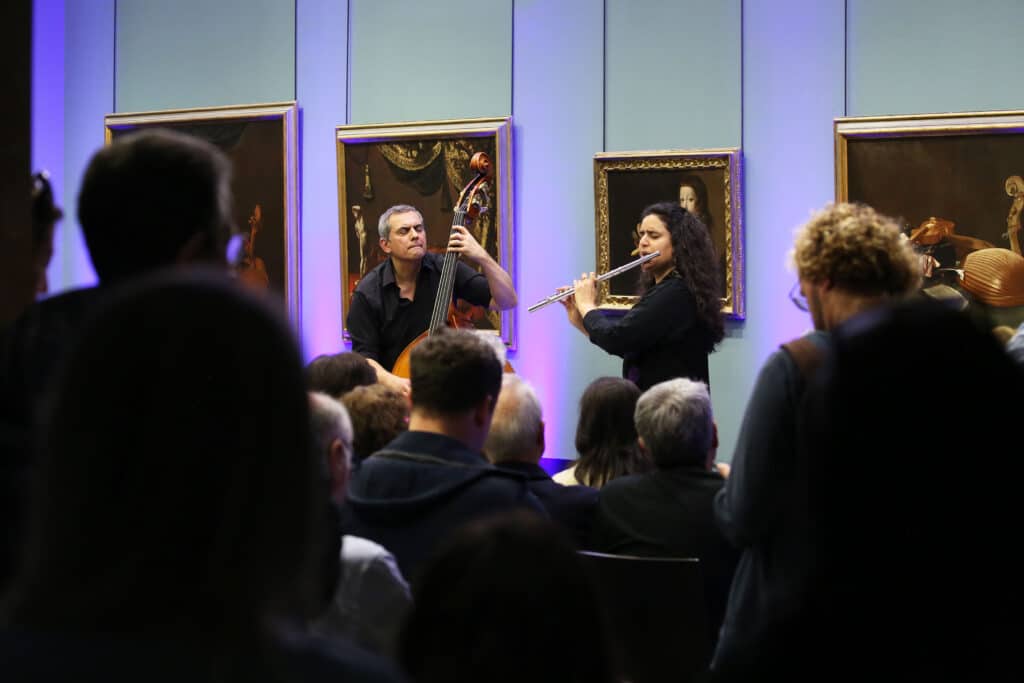
Photo by Luciano Rossetti / Fondazione Teatro Donizzetti
The first concert of the day, entitled ‘Quest of the Invisible’, was at eleven in the morning and featured Franco-Syrian flautist and vocalist Naïssam Jalal, accompanied by French double bassist Claude Tchamitchian. The setting was the Accademia Carrara, an art gallery of Italian paintings and sculptures, plus other artefacts such as coins and porcelain, dating from the Renaissance up to the nineteenth century. The room was chosen with care: behind the small stage were still-lifes featuring ouds and other stringed instruments; and the room was small enough for no amplification to be needed, creating a salon feeling.
Jalal had lost her voice, meaning she couldn’t sing and had to speak in a whisper. But the music from both musicians was so beautiful, so delicate and full of sinuous Middle Eastern melodies, that somehow a whisper felt right, drawing us in. Jalal spoke of combatting xenophobia through remembering that in the eyes of people we consider strangers we ourselves are strangers: a message reinforced by the graceful dance between flute and bass, the timely chiming from a church bell outside, and the contrast between the living musicians and those still-lifes painted centuries ago that graced the wall behind them.
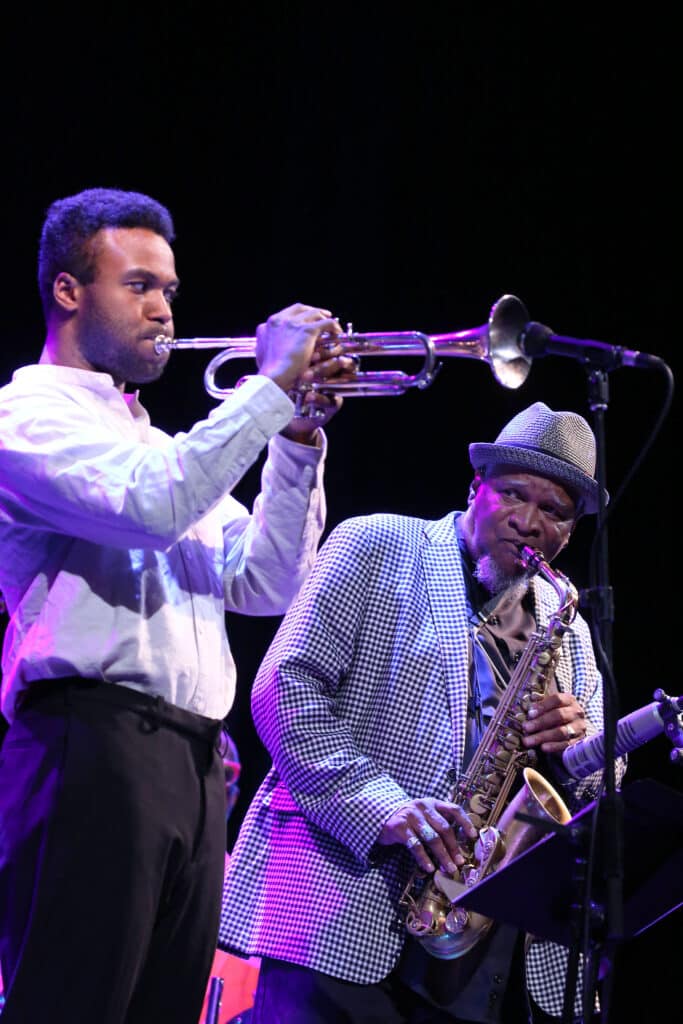
Photo by Luciano Rossetti / Fondazione Teatro Donizetti
The evening concert was another double bill at the Teatro Donizetti. The first set was the Bobby Watson Quintet featuring Bobby Watson (alto sax), Wallace Roney Jr (trumpet), Jordan Williams (piano), Curtis Lundy (double bass) and Victor Jones (drums). I’d wanted to hear Bobby Watson live for years, ever since being blown away in the nineties by his magnificent album Love Remains (1986). My expectations were therefore sky-high, and I wasn’t disappointed with this set of top-flight hard bop.
Bobby Watson began his career with Art Blakey and the Jazz Messengers (1977–81), a group that proved an incubator for many future greats. He and Curtis Lundy go back to the seventies together, and Victor Jones is from the same era. Wallace Roney Jr (son of Wallace Roney Sr and Geri Allen) and Jordan Williams are from a younger generation. So it was appropriate they played a set with tunes spanning all the way from Keepin’ it Real (2020) back to compositions from Watson’s time in the Jazz Messengers, such as ‘Wheel Within a Wheel’ and – for the encore – a terrific take on ‘In Case You Missed It (aka Fuller Love)’. Great solos all round as well, including a classically influenced piano solo from Williams that started the set.
The second set was ‘Famoudou Don Moye Plays Art Ensemble of Chicago’, featuring Famoudou Don Moye (drums and percussion), Moor Mother (voice, spoken words, electronics), Eddy Kwon (violin, voice), Simon Sieger (piano, trombone), Junius Paul (double bass, electric bass) and Dudù Kouate (voice, drums, percussion). The set marked the 50th anniversary of the AEOC’s first concert at the Bergamo Jazz Festival, at which Moye himself played. He’s the only remaining member from the seventies, all the others in the current line-up being considerably younger than he is.
The AEOC has always been about melding disparate influences (especially free jazz, the avant-garde, and African music), multi-instrumentalism, and theatre. We got plenty of that tonight, the focal point on the stage being a table covered with a brightly coloured cloth with an array of percussion instruments. It was like an altar, with Moye (his drum kit behind) as high priest. The start of the concert was equally theatrical, the band chanting and banging gongs off-stage before walking on stage as if in a procession.
The sense of theatre was extended by the spoken poetry of Moor Mother, suggesting the griot tradition of storytelling. What I most enjoyed, however, were the moments when the whole band switched to percussion, building up densely layered rhythms that felt truly incantatory. Moye himself, of course, shone on drums and percussion. Eddy Kwon, a non-binary Korean-American, provided a marked contrast to most of the concert with a distinctive solo that leapt from operatic falsetto vocals to slithery violin – sometimes simultaneously. Sieger was a revelation, being a great pianist while also channelling the spirit of Lester Bowie (on trombone rather than trumpet), and even switching to alto flute at one point.
Sunday 24 March
Attending five concerts was exhausting but rewarding, the first concert starting at eleven in the morning and the last ending at eleven-thirty at night. Fortunately, the first three were all in the Città Alta, with time between them for lunch and exploratory walks, and the last two (another Teatro Donizetti double bill) in the Città Bassa near to the hotel.
First off was Emanuele Cisi (tenor saxophone) with Salvatore Bonafede (piano), performing in the Teatro Sant’Andrea in a room whose ancient stone walls and vaulted ceiling provided ideal acoustics for unamplified music. I’m amazed not to have heard of either of these Italian musicians before, as they’ve played with many greats and are outstanding musicians in their own right. Such discoveries are a strong argument for attending jazz festivals in countries other than one’s own. The performance started with spacious piano and long saxophone notes (warm and full-toned) that made the most of the acoustics and atmosphere, before growing bluesy and boppish. Back to calmness, with wavelets of piano buoying up more long tones from the saxophone, then a lovely minor blues. An expressive ‘My One and Only Love’ was a treat, as was a surprise appearance from Joe Lovano on soprano saxophone for a terrific version of ‘On Green Dolphin Street’.
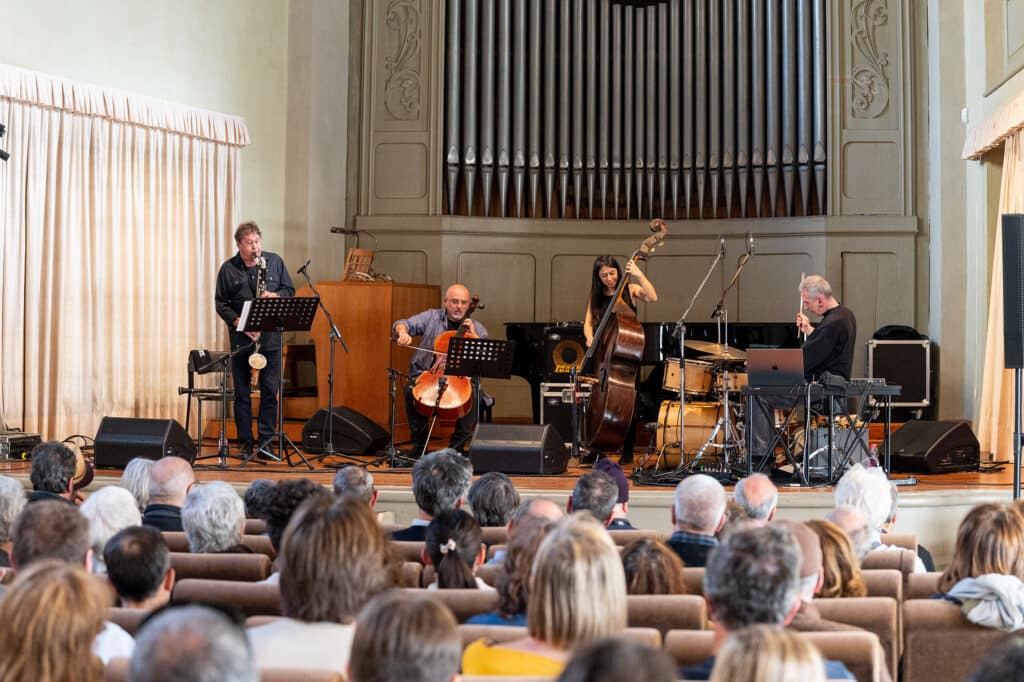
Concert two was a quartet comprising Federica Michisanti (double bass), Louis Sclavis (bass clarinet and clarinet), Salvatore Maiore (cello) and Michele Rabbia (drums, percussion and electronics). It was in the Sala Piatti, an art nouveau masterpiece built in 1901 with a magnificently decorated ceiling. This is another advantage of attending festivals in other countries: discovering not just new musicians but also enjoying their performances in beautiful and unfamiliar venues.
The concert was billed as ‘Federica Michisanti French Quartet, featuring Louis Sclavis’ – quite a mouthful, but indicating that while Louis Sclavis might be the better known name and hence the concert draw, Federica Michisanti is the group’s leader and composer. The music had that distinctly European flavour of ‘classical chamber music meets avant-garde jazz’ and it was spellbinding, ranging in mood from calm to squally, and enhanced with extended techniques such as Rabbia using a cloth to slap and rub his drums, and electronics to expand the percussive soundscape into eerie realms.
Concert three was billed as ‘Caribe’ (the Spanish for ‘Caribbean’) and featured Ana Carla Maza (cello and voice) as leader, Norman Peplow (piano), Marc Ayza (drums) and Jay Kalo (percussion). Maza is a Cuban singer and classically trained cellist, but this concert was all about creating a pan-Caribbean musical experience: from the clavé rhythms of Cuba and Brazil, to bossa rhythms, to the reggae of Jamaica. Rhythm and dance being key, Maza often danced with her cello, plucking rather than bowing, as if her cello were a scaled-down double bass. Throughout the concert, she sang with gusto and an almost relentless cheerfulness. An early equipment malfunction meant that Peplow’s synth keyboard or laptop irretrievably failed to work, but the music worked just fine as purely acoustic.
Partway through the concert Maza made a very valid point: that despite her studying cello for more than 15 years in Paris, not once was it proposed that she play a composition by a woman – so she hoped that her next composition, ‘Astor Piazzolla’ (inspired of course by the great Argentinian composer best known for his tangos), would inspire other women. It therefore felt like a missed opportunity when she resorted to tricks more suited to a pop concert, such as instructing the audience to clap and sing along, and even to wave their phone torches in unison. It made me think of Vanessa-Mae only for jazz: a musician (and supporting band) of abundant talent who shouldn’t need such gimmicks. But most of the audience got into the spirit, rewarding the group with standing cheers and enough lights from phones to fill a planetarium.
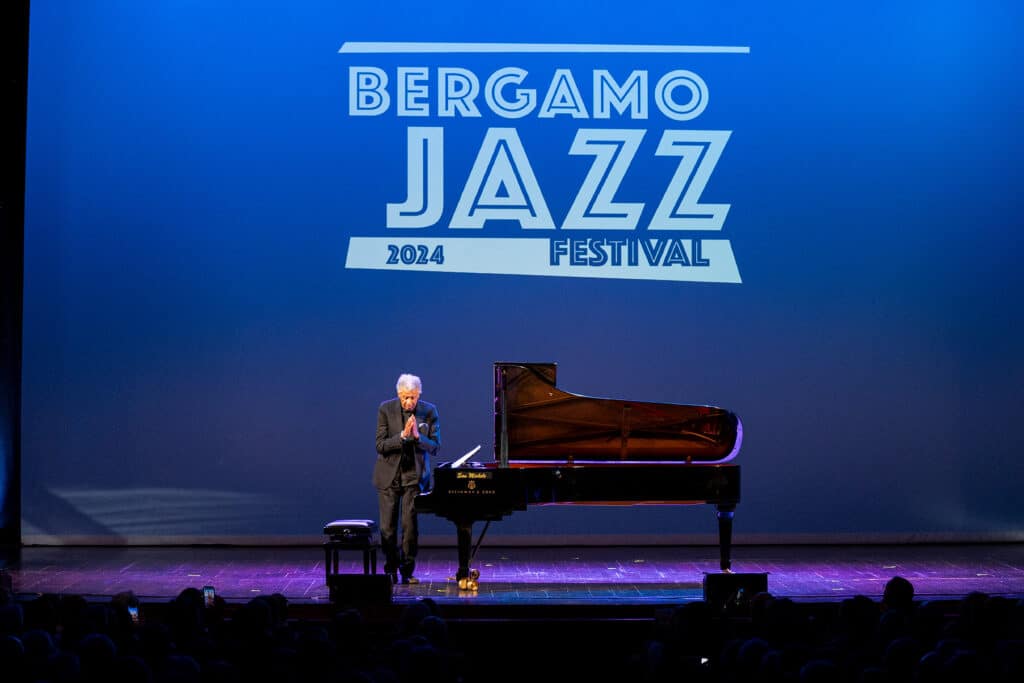
Concert four, the first of a double bill at the Teatro Donizetti, was a solo recital from the legendary South African pianist Abdullah Ibrahim. He’s 89 now and shuffled onto the stage holding the shoulder of an assistant, looking considerably frailer than the last time I saw him. His performance felt tentative at times as well, quiet enough for a chorus of coughing from the audience to become noticeable. But he packed in plenty of repertoire, much of it being what appears on his solo album Solotude (2021): including tunes from the seventies when he was still called Dollar Brand, such as ‘Peace’ and ‘Blues for a Hip King’. He also played continuously with only occasional pauses for reflection, encompassing Monkish dissonance and fleet-fingered runs, melodic fragments modulating into different keys, and folk-like melodies with rich harmonisation.
Ibrahim said not a single word throughout the entire concert, but for the encore he chanted and sang ‘Trance-Mission: the Sound of Centuries Old Maritime Cargo’, a heartbreaking lament by an enslaved person (Welcome home / There’s no one to welcome me home / I see the harbour lights / The deep ocean lights) made all the more poignant by the frailty of the voice that sang it.
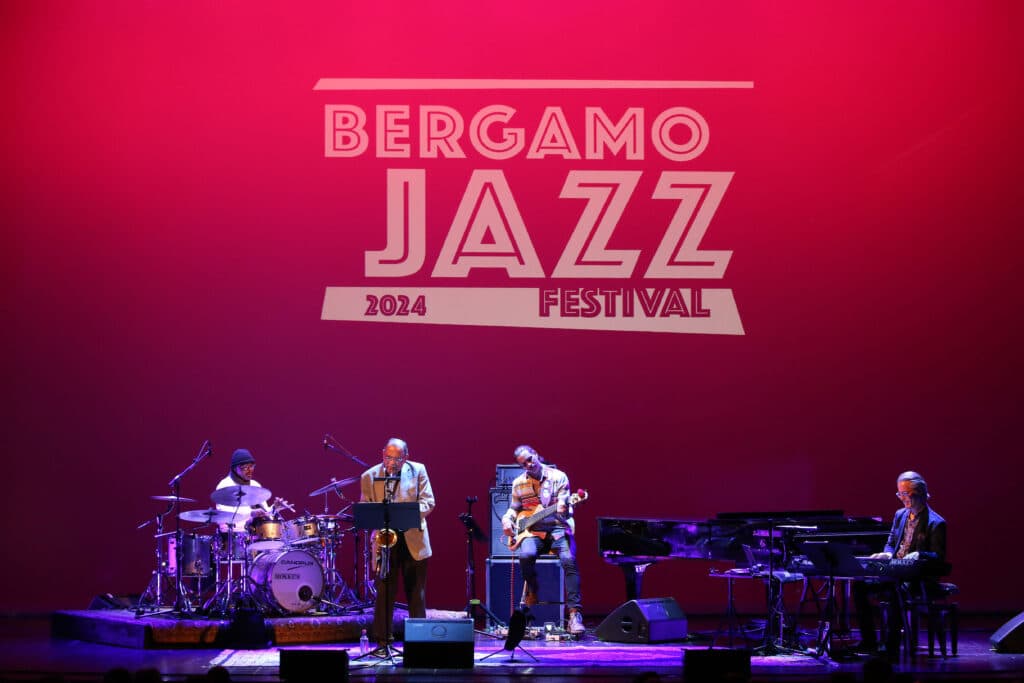
Photo by Luciano Rossetti / Fondazione Teatro Donizetti
Concert five was the Modern Standards Supergroup, featuring Ernie Watts (tenor saxophone), Niels Lan Doky (piano), Felix Pastorius (electric bass) and Harvey Mason (drums). The contrast with Abdullah Ibrahim’s set was dramatic, the band starting out full throttle with a thunderous jazz-rock take on the Prince song ‘It’s About that Walk’ followed by an Ernie Watts original called ‘Sex Pots’ then a most unusual choice, ‘Wonderwall’ by Oasis. Another unusual choice was ‘Dancing Barefoot’ by Pattie Smith. But why not? Herbie Hancock covered a Nirvana track on The New Standard (1996); and Brad Mehldau has covered Radiohead and Rush (and, for that matter, ‘Wonderwall’ itself).
Other tunes included a showcase for Ernie Watts called ‘EW Ballad’, which packed in a great solo that cascaded from the altissimo range right down to the deepest notes; and an Ernie Watts original called ‘Reaching Up’ with an energetic drum solo from Mason (the original drummer in Herbie Hancock’s Headhunters). The encore was Jaco Pastorius’s ‘Teen Town’, which featured a virtuoso electric bass solo from Felix Pastorius that provided a fitting tribute to his father. The Danish pianist Niels Lan Doky was new to me but great too, from hammering out driving piano and funky Rhodes, to delivering a lushly harmonised piano solo of great finesse. At times I felt my attention flagging at the relentless energy, but maybe that was unsurprising after five gigs in one day.
Conclusion
In summary, this was a fantastic festival in a great city that offers plenty of culture and sightseeing: even for partners who aren’t into jazz. The festival’s been going since 1969, and may it long continue.
Julian Maynard-Smith was the guest of Bergamo Jazz
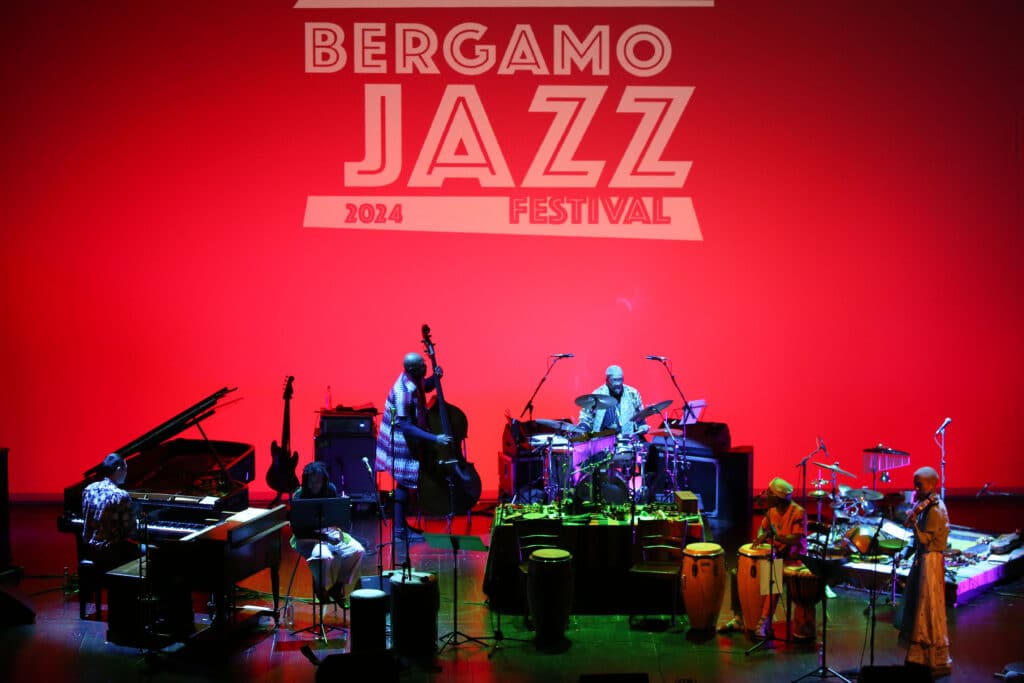
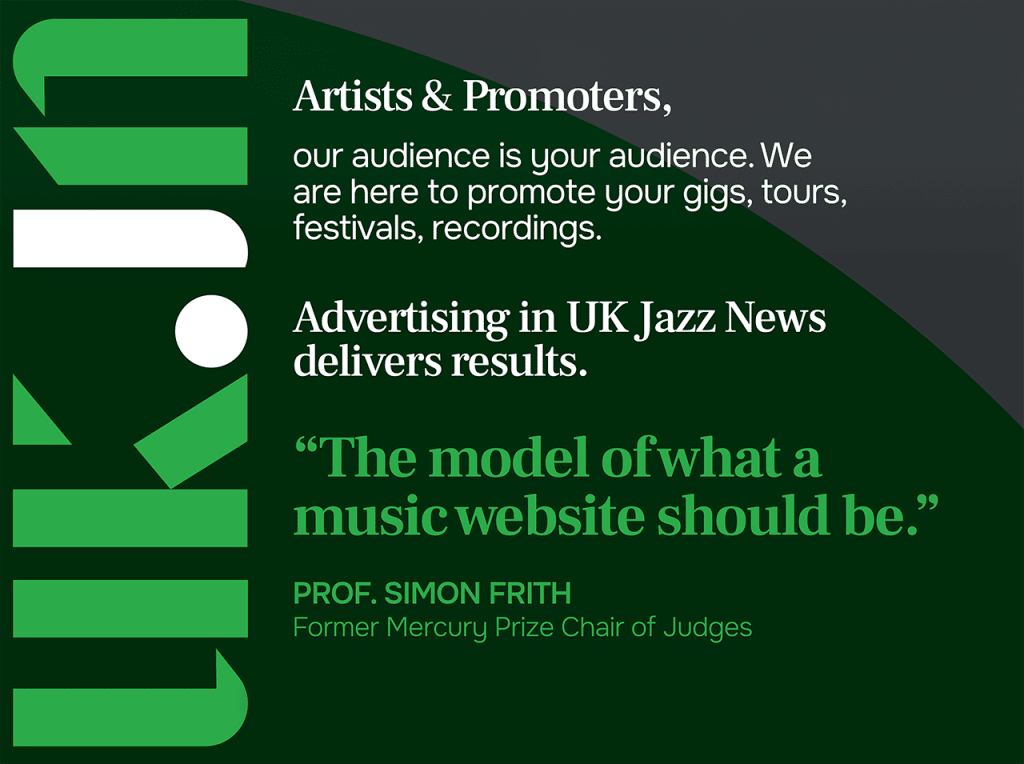

2 responses
Is there a date for the 2025 Festival?
As far as I know, no dates for 2025 have been announced yet. I imagine the dates will around mid- to late March, as with previous years, and that the organisers will create the relevant publicity in good time before that.